Newark
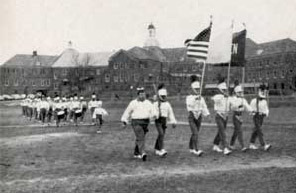
Recreational Activities
The spacious grounds of the institution provided for many club opportunities like Marching Bands and Boy and Girl Scout troops.
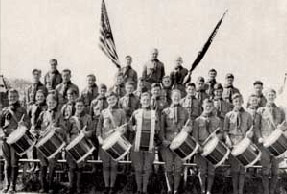
Marching Band
The spacious grounds of the institution provided for many club opportunities like Marching Bands and Boy and Girl Scout troops.
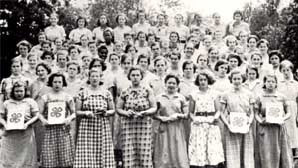
Girl Scouts
The spacious grounds of the institution provided for many club opportunities like Marching Bands and Boy and Girl Scout troops.
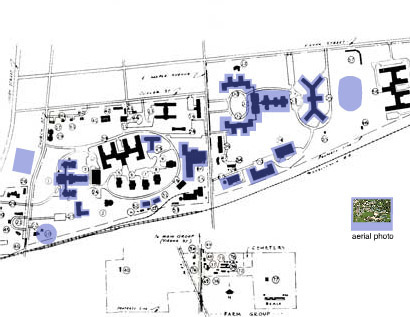
Map of Newark
The Newark State School would develop programs for children, and eventually admitted men as more people were added the the state system. Like other large institutions it would become a source of employment for many in the surrounding community. Newark was seen as a place of refuge for the many individuals with disabilities, and a relief for the parents of those individuals.
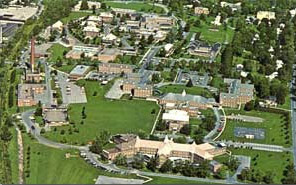
Aerial View
A bird's-eye view of Newark as a Development Center
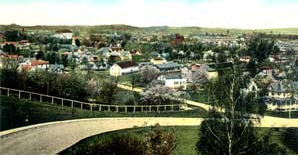
“Asylum Hill”
This is the view from on top of "Asylum Hill" where the A, B, and C buildings were located overlooking the town below.
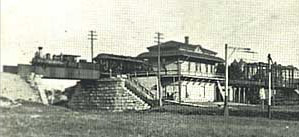
Arriving at Newark
Early visitor, workers, and inmates arrived to Newark from the Erie Canal, wagon, or train
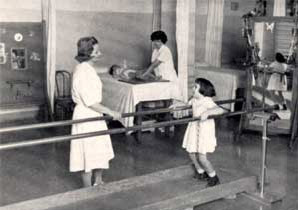
Girl's Hospital
Providing care for many children was more easily provided in institutions. Physiotherapy was one way in which children were taught greater mobility. Boys and girls were segregated to different facilities but might interact in special activities. One of the reasons for this was that Newark started out as a facility initially for only "feeble-minded women" of child-bearing age. It later became a home to members of both sexes with developmental disabilities after the 1920s.
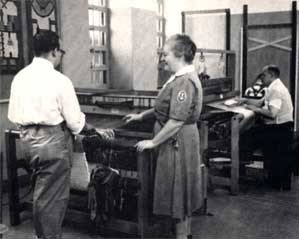
Occupational Therapy
Occupational therapy taught inmates a trade like metal work, painting, or many other useful skills that could lead to work outside the institution.
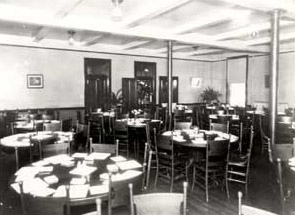
Burnham Building's Girls' Dining Room
This was a dining room in one of the girls' buildings. The dining rooms were large but there was an attempt to provide a home-like atmosphere for the many, many diners.
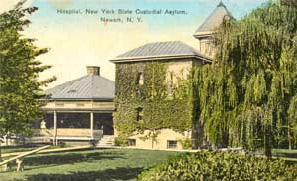
Hospital Design
Hospital design often employed the use of fresh air as a therapy. This practice stemmed from successful "open-air" treatments for tuberculosis. The large porch would help to serve this purpose. Other treatment occurred inside.
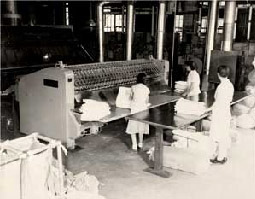
Laundry, Storehouse, Powerhouse
Three integral parts of the institution were the laundry, storehouse (and bakery building), and powerhouse. New buildings in 1969, these three provided many vocational opportunities for members of the Newark Community.
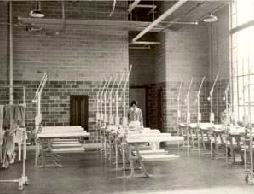
Laundry, Storehouse, Powerhouse
Three integral parts of the institution were the laundry, storehouse (and bakery building), and powerhouse. New buildings in 1969, these three provided many vocational opportunities for members of the Newark Community.
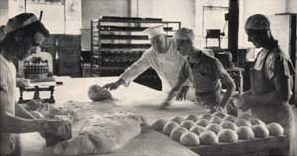
Bakery
Working in the bakery was another way in which people being cared for could learn a skill and help in the running of the institution at the same time.
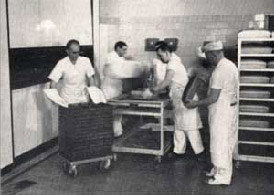
Bakery
Working in the bakery was another way in which people being cared for could learn a skill and help in the running of the institution at the same time.
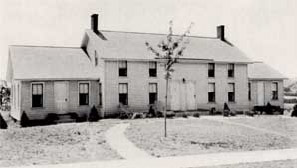
Colony
Not only did instruction help out the institution, it was part of a program that could lead to jobs outside the institution. This house served as a practice facility for girls who could eventually get jobs in the community.
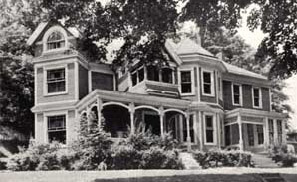
Colony House
When skills were mastered, patients could be sent to a colony house in town, away from the institution. They would stay in a "group-home" style house where girls could be hired out as domestics in the community. Boys often were placed on a farm or in manufacturing. This was one house in Lyons, New York, where patients from Newark lived and worked from.
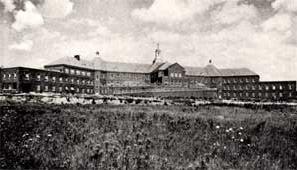
Boy's Hospital
The Boys' Hospital was home to facilities for many kinds of treatment. It also housed the research laboratory.
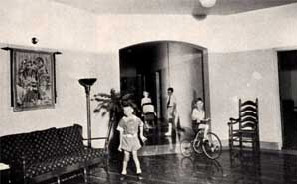
Boys at Hospital
The Boys' Hospital was home to facilities for many kinds of treatment. It also housed the research laboratory.
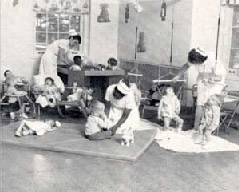
Hospital
With more than 4000 patients at it's peak, nurses were kept busy with a variety of projects helping people with all kinds of needs.
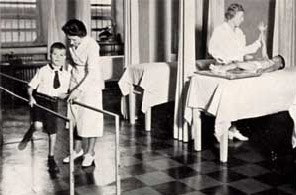
Hospital
With more than 4000 patients at it's peak, nurses were kept busy with a variety of projects helping people with all kinds of needs.
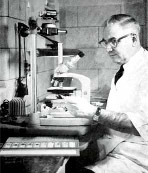
The Laboratory
Institutions provided outlets and some cutting-edge technology in which to perform research. Clinical studies could be conducted with a large number of participants in a controlled environment. Studies done at state school laboratories and research centers were beneficial to all of society. Unfortunately, the residents of the institutions were sometimes compelled to participate.
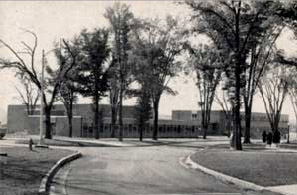
School at Newark
Not just work
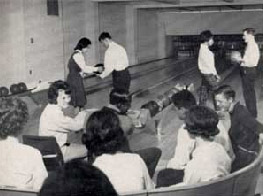
Bowling
Also at the school
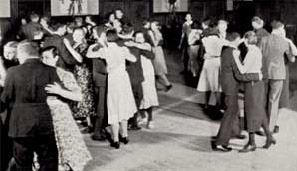
School Dance
Also at the school
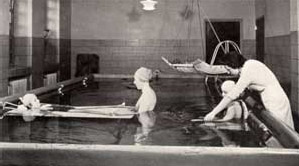
Hydro Therapy
With more than 4000 patients at it's peak, nurses were kept busy with a variety of projects helping people with all kinds of needs.

